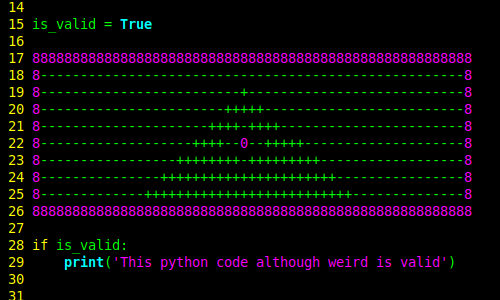Ask WWHWWW to plan small tasks and big projects
Simple task or complex project, personal or professional, essential or a pastime, by yourself or with a team … Regardless of what you want to accomplish, there is a need to clarify it to make sure it gets done correctly, smoothly, and on time.
I searched for better ways to plan project but the project planning methods I found feel too theoretical and too high level. I needed something simpler and much more practical.
My solution: Just ask WWHWWW (pronounced “wow”) which stands for What, Why, How, When, Where, and Who. These six words act as triggers to find the right questions about what you want to accomplish. This one simple method scales up and down to adapt to all types of goals, projects or tasks, and it is easy to remember. It may seem obvious but I have repeatedly seen very organized and well meaning people, including me, skip this planning step to eventually see their projects get off track.
The Five Ws and How framework is effectively the same as WWHWWW but restricted to professional project management. As you will see in this article, asking WWHWWW also works for small tasks, professional or personal.
I want to show you how to use these generic six triggers to make planning straight forward and to help you reach your goals. Let’s first look at why it’s important to go through the WWHWWW exercise.
The importance of writing down the answers
You see it in your mind as clear as day. It looks amazing and can also do amazing things. You are excited and want to start working on it right away because you know exactly how you’re going to proceed. Don’t!
This beautiful picture in your mind is too likely to fade away before you make it a reality. You may have to take a break away from the project because you are sick or need to deal with something else more urgent. On a tough and busy day it may be difficult to recall all the details and goals that you had in mind originally.
Furthermore, it may look beautiful and complete in your head, but is it really? We have all experienced the situation where we thought that we had it all figured out, that we had a great plan, just to realize that we missed something and we now have to go back to the drawing board. No plan is perfect or complete because it’s impossible and a waste of time to aim for perfection. However we should make sure to capture the essential.
This is why, regardless if it’s a small task or a big project, it’s crucial to write down the answers you get out of asking WWHWWW. This process will help you start off on the right foot, but also to stay on track, motivated, and do the right thing at the right time through out the project. You need to be able to read what your original idea or your original picture of the project was. When you are struggling because of unforeseen challenges or just because you are tired that day, you’ll be happy to have these notes down the road. Naturally you shouldn’t spend as much time asking WWHWWW for big projects and small tasks.
Use a notebook, your favorite note taking app or your team’s project planning tool. The exact place doesn’t matter. As long as it’s written somewhere easily accessible and it won’t get lost, then you’re good to go.
Now why is each trigger important, and what should you ask?
 Photo credit: Modified from Unsplash
Photo credit: Modified from Unsplash
Ask What, to clarify the vision
“Setting goals is the first step in turning the invisible into the visible.”
— Tony Robbins
In establishing a vision, asking “what is the end goal?” is the bare minimum. It guarantees that everybody goes in the same direction and in the right direction, today and throughout the project. Many decisions may be required and a clear vision will greatly help making them. It is however important to explore the what trigger further to avoid some pitfalls.
Too often projects won’t have one specific moment or step acting as the finish line for the project. For example any project goal that starts with “improve” will never seem completed unless you define specific results because there is always room for improvement. In that case you need to define clear deliverables or metrics that will make it clear that you reached your the goal. Providing these clear deliverables or reaching these clear metrics will lead to a feeling of achievement that will boost you and your team to tackle the next project.
Finally, this is the time to do the cost-benefit analysis of the project and assess the risks in particular. Even for a personal project, it’s wise to make sure you won’t be wasting your precious spare time on something bound to fail. So make sure to ask:
- What will it look like when we are done?
- What is the exact metric we should aim for?
- What are the deliverables we need to provide?
- What am I or are we going to gain from this project?
- What are the risks associated with this?
Ask Why, to motivate
“If you want to build a ship, don’t drum up the men to gather wood, divide the work and give orders. Instead, teach them to yearn for the vast and endless sea.”
— Antoine de Saint-Exupery
Leading a team is not about telling them to do something. Leading is about inspiring others to do what you want them to do. An essential part of inspiring others is to make them see why they should care about it. Only then will they go the extra-mile for the project. Understanding why is also essential to prioritize daily the work to be done. Every team member should be told and have in writing the answers to the following:
- Why is it important for the team/company to complete this project?
- Why should I be working on this rather than something else?
- Why am I doing this instead of somebody else?
It may not seem as important to write down why for your personal projects, in particular those that you have to get done. However the same need for motivation and prioritization applies to personal projects. Leaders cannot lead others if they cannot lead themselves! Start leading yourself by clarifying why you want or need to do your personal tasks and projects:
- Why is it important for me to achieve this?
Ask How, to set a process
“If you get the landscape right, the characters will step out of it, and they’ll be in the right place.”
— Annie Proulx
Of the six triggers in the WWHWWW method, this one is the trickiest. It requires some balance. It really needs to be done, like the other triggers, but should not be overdone at the risk of micromanaging. The point of writing down the answers to how questions is not to build a to-do list.
Instead you want to establish the processes that will be used throughout the project to manage the work, or make decisions. For teams that don’t have a perfect workflow that they rigorously follow, it’s the time to define as clearly as possible how everybody will work together. This is a good opportunity to try new processes to improve over the previous projects.
- How are we going to track the tasks?
- How do we track progress to make sure we are on track to meet the deadline?
- How do we communicate effectively to avoid knowledge silos, miscommunication and forgotten items?
Similarly for personal projects, the point is not to build your to-do list here. However you can set principles of how you are going to go about tackling this project.
- How much money do I want to spend on this project?
- How will I get the tools to do this?
- How do I avoid my perfectionist tendencies?
Ask When, to schedule
“The best thing about the future is that it comes one day at a time.”
— Abraham Lincoln
The first and obvious purpose of asking when is to set a target date for the project. Everybody on the team working on this project should be aware of this target date. For long enough projects, it is a good practice to also define milestones, intermediate target dates for specific achievements or parts of the project.
- When does this need to be done?
- When should part X be done?
Another important result of asking When is to reserve, or time block, specific time in your and/or your team’s calendars to work on the projects. The benefits of time blocking are numerous. At a personal level, time blocking provides focus, reduces context switching, and can prevent procrastination. For a team it can help managing resources and prevent burnout by clarifying time boundaries for work.
- When am I going to work on this project?
- When is my team or team member going to be available to work on this?
Related to time blocking is the approach of defining implementation intentions. The idea is to define beforehand when and where you will perform a certain work or task. Numerous studies have shown that it improves habit building which can be essential for certain personal projects in particular. For example you could say “when I am done with my morning coffee, I will spend 10 minutes working on my novel”. Assigning a specific and reasonable, i.e. short, time is also a great trick to make sure you can do it repeatedly (see the 2-minute rule).
- When can I work on this every week/day/workday?
Besides scheduling and implementation intention, it is generally useful for bigger projects to be clear when to quit. Once wrapped up in a project, we may feel emotionally attached to it and fail to see that it’s not going well. Defining and writing down early on when it is time to give up can help counterbalance the emotional attachment. Likewise, it might be good to know when to keep going!
- When should I give up on this project?
Ask Where, to locate
“Be sure to put your feet in the right place, then stand firm.”
— Abraham Lincoln
To finish up the implementation intentions started with when, you must also ask where. While when is more about committing to a specific time that will work, where is about setting the right conditions and environment to get things done. In order to get things done on a project, you need the right environment that keeps you focused and with minimal distractions.
You also need to have the right tools for the job! It might be a good time to make sure you know where is everything you need for this project. Besides finding where things are, you may also need to figure out where things are going. For example in the case of a software project you often need to know where you will deploy the code made by the team.
- Where is the right environment to work on this?
- Where are all the tools I need?
- Where can I work to be close to all the equipment needed?
- Where do we need to put/deploy this when it’s ready?
Ask Who, to assign
“Every man I meet is my superior in some way, and in that I learn from him.”
— Ralph Waldo Emerson
Finally you need to figure out who will need to work on the project. Even if it’s a personal project you may need to get help from someone and they may not be available all the time. For example all my blog posts are reviewed by somebody else, ideally somebody different every time. So I need to identify who can do the review each time I start writing a new post.
- Who can give me valuable feedback?
- Who can show me how to do this?
For team projects, make sure to ask not only who can do the work for the project but also who would benefit from the project at a personal level. If your team members have something personal to gain from the project, then you can be confident that they’ll go the extra mile when needed. It might also be important to identify specific roles for a given project such as stakeholders, decision-makers, or points of contact.
- Who needs to be involved in the project?
- Who is the best suited for this job?
- Who will benefit the most from working on this?
- Who will make important decisions regarding the design?
WWHWWW in practice
The WWHWWW method doesn’t provide a generic set of questions that ought to work for all projects. Instead it provides a process to get to all the questions that need to be answered for your specific project. Overtime you may want to create a template of WWHWWW questions because the same questions will come back over and over for the same type of project. Make sure to still try to go beyond the template though.
While I strongly recommended to write down the questions and answers from WWHWWW, these shouldn’t be written in stones. Typos are a nightmare to correct with a chisel! Also reviewing all aspects of a project regularly is important to adapt to changes in the context or requirements. The reason why you started the project may have changed. What you wanted to build may be obsolete or maybe turned out to be impossible. It’s best to ask WWHWWW more than once.
For personal projects, I ask WWHWW or what, why, how, when, and where because I do most of them all by myself. Also instead of answering each letter one by one, I tend to group what and why in one section, and when and where in another. What and why are so linked that it’s typically much easier to write and read them together than separately. Similarly when and where are often connected, especially when using implementation intentions.
This may seem like a detail but I think it matters significantly in the long term: write your answers to the WWHWWW questions in the present tense. Instead of saying “We will do this”, it is much better to say “We are doing this”. This way you define the state that the project should be in right now and not in the future, sometime, maybe. This also makes your answers atemporal. When you read your answers to WWHWWW in a few weeks or months, they will not sound outdated. You can edit them and update them more easily to what is the current state of the project without rewriting it all.
The next level can even be to use the imperative mood with “Do this”. This may seem too direct but it has the advantage of reinforcing the importance of following the answers. They feel less optional, more mandatory.
 Photo credit: Pexels
Photo credit: Pexels
To conclude
A project document created using the WWHWWW method should feel like a recipe from a recipe book. The delicious looking image of the dish is why you want to make it. The ingredients tell you what you need to make the dish. The steps tell you how to put the ingredients together, where to cook these ingredients, and when to go to the next step. You still have to decide who will help you making the dish if anybody, and who will eat it with you though!
There are a lot of things to consider and think about for some projects. There are a lot of small things to forget for small and big projects. Using the WWHWWW method will not do the thinking and figuring out for you. However it will help you ask more questions and cover more ground making it less likely to miss something important.
“From there to here, from here to there, forgotten questions are everywhere.”
Thank you to Wei Sun for reviewing this post and providing very useful feedback.





